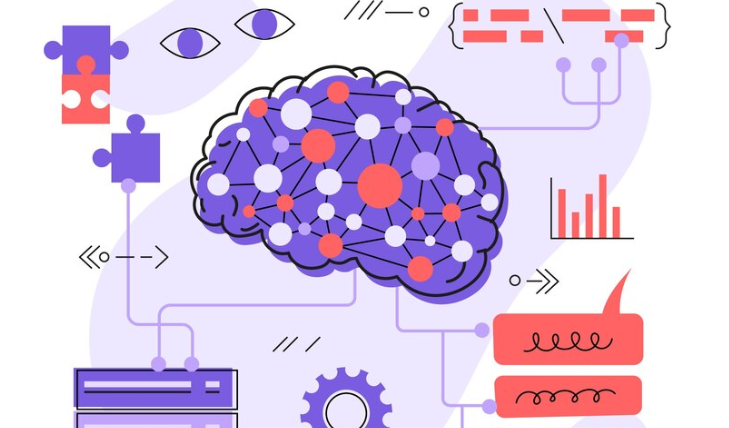As the digital age evolves, we find ourselves increasingly connected to each other through data, social platforms, and devices. But what if the next frontier of the Internet isn’t just about sharing information or entertainment, but about sharing something much more personal—emotions? The concept of the “Internet of Emotions” is emerging as a powerful and transformative idea, one that could shape the way we communicate, interact, and experience the world around us.
What Is the Internet of Emotions?
The Internet of Emotions refers to the idea of embedding emotional awareness and understanding into the digital ecosystem. It’s about creating systems that can sense, interpret, and respond to human emotions—whether through facial expressions, voice tone, body language, or biometric data—and use that information to influence interactions, content, and decision-making processes in real-time.
In this future, our digital devices won’t just react to our commands—they will understand and respond to our feelings, tailoring experiences to suit our emotional states.
The Evolution of Emotional Technology
1. Emotion Recognition
Emotion recognition technology has already made strides, primarily through artificial intelligence (AI). By analyzing facial expressions, vocal tones, and physiological responses, AI can detect emotions such as happiness, sadness, anger, or fear. Tools like Affectiva and Realeyes are already being used in marketing, entertainment, and customer service to gauge emotional reactions and tailor experiences accordingly.
2. Emotional AI Assistants
Voice assistants like Amazon Alexa, Apple’s Siri, and Google Assistant are becoming more emotionally intelligent. They don’t just answer questions—they can adjust their tone, suggest content, or give personalized responses based on emotional cues. Imagine an AI that not only tells you the weather but suggests a playlist that matches your current mood.
3. Wearables and Biometric Sensors
Wearables, from smartwatches to fitness trackers, are already measuring physical indicators like heart rate and body temperature. These devices could be augmented with emotional monitoring, offering real-time data on a person’s emotional state. Apps could use this data to offer support, suggest calming activities, or even notify a loved one if someone is feeling anxious or stressed.
4. Smart Environments
The concept of smart homes is evolving beyond just controlling lights and appliances. In the Internet of Emotions, smart environments would respond to emotional cues. For example, a home might adjust its lighting, temperature, or music based on your emotional state, creating a space designed to calm or energize you depending on what you need.
Applications and Impacts of the Internet of Emotions
1. Personalized Experiences
The most immediate benefit of emotional intelligence in technology is the ability to create deeply personalized experiences. This goes beyond recommending movies or songs; it could mean systems that adapt to your emotional needs in real time, offering content that nurtures your mental and emotional health.
For instance:
- Entertainment platforms could offer shows or music that match your mood or even alter their pacing and plot based on your emotional engagement.
- Shopping experiences could adjust product recommendations based on your mood, offering items that comfort, excite, or help you relax.
2. Mental Health and Well-being
The Internet of Emotions has the potential to revolutionize how we approach mental health. By monitoring emotional and physiological responses, apps could help individuals recognize early signs of stress, anxiety, or depression, offering timely interventions. Tools like Woebot, a mental health chatbot, already provide cognitive behavioral therapy (CBT) techniques through AI-driven conversations.
3. Empathy in Communication
In professional and personal interactions, understanding emotional cues could greatly improve communication. Tools that provide empathy-driven responses could create more meaningful and effective exchanges. In customer service, for instance, systems that detect frustration could instantly escalate issues to a human representative or adjust responses to diffuse tension.
4. Improved Marketing and Consumer Insights
For brands, understanding consumer emotions can lead to more targeted and effective marketing strategies. Rather than relying solely on demographic data, marketers could use emotion-based insights to craft campaigns that resonate on a deeper, more emotional level with audiences.
Ethical Considerations
While the promise of the Internet of Emotions is exciting, it also raises significant ethical concerns:
1. Privacy and Consent
Emotion data is deeply personal. Who owns that data, and how is it protected? Ensuring that users have control over their emotional information is essential to maintaining trust in these technologies.
2. Manipulation and Exploitation
There’s the potential for this emotional data to be exploited, especially in areas like marketing and politics. Could brands manipulate consumers by targeting them based on their emotional vulnerabilities? Careful regulation and transparency will be needed to prevent misuse.
3. Emotional Overload
With constant emotional feedback from our devices, there’s a risk of emotional overload. How much emotional data should we be receiving? It’s important to ensure that these systems don’t overwhelm users with constant emotional triggers or feedback.
4. Bias in Emotion Recognition
AI-based emotion recognition systems are still imperfect and can be biased. For instance, these systems may misinterpret emotions, especially when analyzing individuals from different cultural or social backgrounds. Ensuring the accuracy and fairness of these systems will be crucial.
The Future of the Internet of Emotions
As we move toward a more emotionally intelligent digital world, the question is not if the Internet of Emotions will emerge, but how it will evolve. The future promises a deeply interconnected world where our devices understand us as humans—not just as users. As this technology matures, it will create new opportunities for connection, empathy, and personalized experiences.
However, it’s important that as we build a world where emotions are part of the digital fabric, we do so with care, respect, and responsibility. In the end, the goal is not just to create smart technology, but to create technology that truly enhances our humanity.


